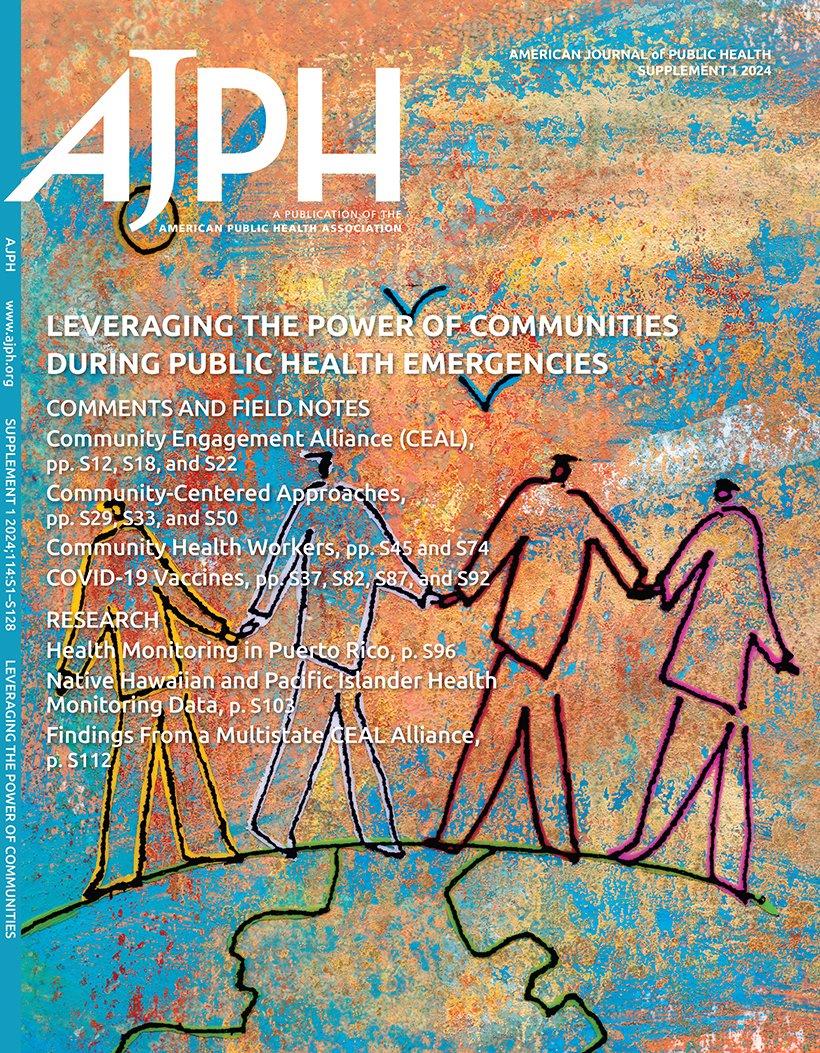Prevalence, Correlates, and Impacts of Displacement Because of Natural Disasters in the United States From 2022 to 2023.
IF 9.6
1区 医学
Q1 PUBLIC, ENVIRONMENTAL & OCCUPATIONAL HEALTH
引用次数: 0
Abstract
Objectives. To quantify the prevalence, correlates, and impacts of displacement because of natural disasters in the United States. Methods. We pooled data across 10 independent survey samples from the Census Bureau Household Pulse Survey from December 2022 to September 2023. Survey questions asked about displacement from home because of natural disasters, duration of displacement, and impacts of disasters. Results. In our weighted sample of 213 234 003 adults, 3 166 500 (1.5%) reported displacement in the past year because of a natural disaster. People of color, sexual and gender minority populations, and those with lower incomes, disabilities, or unfavorable social determinants of health (SDOH) such as food insecurity were more likely to report displacement. Long-term displacement was more common with fires compared with other disasters. Disaster impacts, including food and water shortage, electricity loss, unsanitary conditions, feeling isolated, and experiencing scams, were more common among people of color and individuals with lower education or income. Conclusions. Many people in the United States, particularly from health disparity populations, are displaced because of natural disasters. Addressing SDOH and other vulnerability factors may help improve disaster preparedness and mitigate postdisaster impacts. (Am J Public Health. Published online ahead of print October 24, 2024:e1-e11. https://doi.org/10.2105/AJPH.2024.307854).2022 年至 2023 年美国因自然灾害而流离失所的发生率、相关因素和影响。
目标。量化美国因自然灾害而流离失所的发生率、相关因素和影响。方法。我们从人口普查局家庭脉搏调查中汇集了 2022 年 12 月至 2023 年 9 月期间 10 个独立调查样本的数据。调查问题涉及因自然灾害而背井离乡、背井离乡的持续时间以及灾害的影响。结果。在我们的 213 234 003 个成人加权样本中,有 3 166 500 人(1.5%)报告在过去一年中因自然灾害而流离失所。有色人种、性和性别少数群体以及收入较低、有残疾或有不利的健康社会决定因素(SDOH)(如粮食不安全)的人群更有可能报告流离失所。与其他灾害相比,火灾造成的长期流离失所现象更为普遍。在有色人种和教育程度或收入较低的人群中,食物和水短缺、断电、不卫生、感到孤立和遭遇诈骗等灾害影响更为常见。结论。美国有很多人,尤其是健康状况不佳的人群,因自然灾害而流离失所。解决 SDOH 和其他脆弱性因素可能有助于提高备灾能力和减轻灾后影响。(Am J Public Health.https://doi.org/10.2105/AJPH.2024.307854 )。
本文章由计算机程序翻译,如有差异,请以英文原文为准。
求助全文
约1分钟内获得全文
求助全文
来源期刊

American journal of public health
医学-公共卫生、环境卫生与职业卫生
CiteScore
9.50
自引率
3.90%
发文量
1109
审稿时长
2-4 weeks
期刊介绍:
The American Journal of Public Health (AJPH) is dedicated to publishing original work in research, research methods, and program evaluation within the field of public health. The journal's mission is to advance public health research, policy, practice, and education.
 求助内容:
求助内容: 应助结果提醒方式:
应助结果提醒方式:


